The content of the article
The guinea pig is like a soft toy, only animated, easy to care for and easy to maintain. A wonderful pet, which will brighten up loneliness, will give you warmth, will delight you with its tenderness for 5 to 15 years. But only under the condition of care and reciprocal love on your part. Caring for her is so simple that even children of primary school age will spend no more than two hours a week servicing a pair of toy animals.
Basic Guinea Pig Care Rules
Guinea pig - the animal is not only for children's fun. A small, fluffy animal will give pleasure even in the process of caring for it. In order not to be disappointed neither by you nor by the guinea pig, follow some guidelines for correct content:
- feeding - two to three times daily;
- thorough cleaning of the cage - once every week;
- bedding change - once every three days;
- combing wool - once every three days (optional every other day);
- feeder cleaning - daily;
- nail clipping - once a year.
In addition, it is recommended to conduct a routine inspection every three days, which will allow to take emergency measures as soon as necessary. The purpose of the inspection is the timely detection of wheezing during breathing, runny nose, wounds on the skin, eye problems.
Mumps need to ensure daily walks around the apartment. At the same time, be careful not to accidentally injure a small animal, and protect from other pets that are dangerous to the baby. If you value your furniture, take precautions, as the rodent can check the strength of its teeth on it.
Animal nutrition
The ration of the guinea pig is not distinguished by the exquisite dishes, despite the fact that the choice of food is quite diverse. Pet food is grain, vegetables, fruits, hay and grass.Treats are beets, carrots, oats, and various root vegetables. From herbs you can give a dandelion, clover, nettle, yarrow. But the nutrients derived from natural food is not enough. Provide the animal with additional vitamin C in the ratio of 1 mg of ascorbinka per 1 ml of water, which must be changed every day. When kept at home, the guinea pig needs vitamin C at 20 mg per day.
It is strictly forbidden to feed the rodent with damp and dirty food, fruits that have lost their freshness, as well as sweets. But flax seeds and sunflower have a beneficial effect on the beauty of the fur.
Diet is important for the health of your pet. With daily feeding, observe one time in the morning and evening. Only for pregnant women an exception is made - transfer the animal to four meals a day. Feed in the feeder must be constantly, as the guinea pig does not tolerate hunger.
And do not be embarrassed when a rodent eats its stool. This phenomenon is normal for this type of animal.
Bathing domestic pig
Despite the fact that the mumps is sea, it is negatively related to water procedures. Therefore, bathing should be carried out as needed.In case of severe contamination, it is possible to do with washing only the affected part of the animal's body. The temperature of the water should not exceed 38 degrees, and if you can not do without shampoo - use the children's means for bathing. Be careful, because you can not wet the mumps head. After finishing the procedure, wrap the animal in a towel and dry it. It is allowed to use a hair dryer, especially when your pet is of long-haired breed.
Combing
Short-haired guinea pigs independently look after themselves. With the help of their own teeth, they comb and thus clean their fur. But it does not hurt, if at least occasionally you walk on it with a special brush. During the molt, mainly in autumn and spring, it is necessary to comb the wool twice a week.
But the long-haired animal will have to take care of the owner. This procedure is necessary not only for the aesthetic appearance of the mumps, but is also a kind of massage, and also does not allow the tangle of wool. If you still formed a fallen lump, carefully cut off his scissors.
The biggest trouble is the Angora breed.Its wool reaches a length of 20 cm and must be combed two or even three times a week with a brush and a special comb. With the regularity of such a procedure, the wool acquires a silky sheen. And for the summer season, you can cut it, thus facilitating the long-haired gilt coat.
Guinea pigs are accustomed to combing from an early age. To pull the wool less, moisten it. Take the animal to its knees and use the comb to unravel the hair, and then continue with a soft brush. For proper care, you will need special accessories that can be purchased at a pet store:
- soft brush for small animals;
- comb with rare teeth;
- metal brush;
- scissors.
Claw care
The claws of the guinea pig require proper attention, and caring for them is not a tribute to fashion. They, like the nails of a person, grow, and at home the animal has no opportunity to grind them in a natural way. Over time, long claws cause inconvenience and impede movement, so the owner has to cut them periodically. The procedure is not pleasant for the animal, and for its owner.This stage of care requires extreme care and certain knowledge. The upper zone of the claw is "alive", it is here that the nerve endings and blood vessels in pigs are located. Hitting them with too short a cropping will not only hurt the animal, but also create additional problems for yourself. The wound can become a source of infection and heal for a long time.
Care of claws begins at the age of one year with a frequency of one to two times each year. Without outside help is not enough. Someone should hold the little animal, and you are directly involved in its manicure. People with years of experience recommend highlighting the claws from below with a flashlight for convenience. Then you can see a clear margin of acceptable cropping. If you touch blood vessels, immediately stop the bleeding, and in order to avoid infection, clean the cage.
As for claw shortening accessories, scissors and tweezers can be purchased at specialized stores for animals.
Teeth care
In the guinea pig, the front teeth, like the claws, are constantly growing, which is characteristic of all rodents.Nature has laid down that the animal must grind off the incisors, because long teeth interfere with the quality food intake and can hurt the tongue. Provide your pet the opportunity to nibble something hard. The problem will be solved if there is a solid food in the diet, for example, grain, or sprigs of trees (preferably fruit).
In some cases, you have to contact a veterinarian to shorten the incisors. The reason is usually in congenital teeth. Then plan a trip to a specialist about once every three months.
Eye care
With daily inspection of the guinea pig, pay close attention to the eyes. If they are clean, without secretions - this is an indicator of the healthy state of the animal. If there is the slightest change, swelling or even redness, wipe them with soft paper napkins and analyze what caused the disease. The animal does not like drafts, it may be worth moving the cage to a more protected place. When repeated deviations from the norm requires the help of a specialist who will prescribe eye drops.
Cleaning the ears
Cleaning the ears is one of the important points of care.Check for ticks and keep them clean with a paper towel. Do not use ear sticks and cotton swabs. If an unforeseen disease occurs (an unpleasant smell emanates from the ears, and the animal itself tends its head to the side of the problem ear) - this is a signal for the intervention of the veterinarian.
Diseases
Guinea pigs, like any living organism, are susceptible to various kinds of diseases, although they rarely get sick. Measures should be taken when one of the symptoms that are not characteristic of the general characteristics of this animal species occurs:
- cough;
- lies with closed eyes;
- tight breathing;
- increased thirst;
- the hair is ruffled or falls out;
- shivering;
- runny nose;
- loose stools;
- convulsions.
If these or other signs of the disease appear, you can try it yourself (if you are confident in your abilities) to treat a sick pet.
First of all, disinfect the cell. In drinking water, add two or three drops of potassium permanganate to the solution was slightly pink. Spend cleansing the stomach, giving a tablespoon of castor oil. Put on a tough diet, but at the same time put in place of ordinary food a few sprigs so that the teeth work, suspending unwanted growth of incisors.
Still, the most reliable way to return an animal to a normal lifestyle is to visit a veterinary clinic or call a veterinarian to a house.
As you can see, care for guinea pigs is simple. It is only at first glance it seems that a lot of trouble. The main thing - when buying, choose a fluffy beast with shiny hair, clean and dry eyes, and further pleasant cares will fall on you. Having provided the proper maintenance and nutrition on your part, you will get in the face of a healthy pet a grateful and funny little animal.
Video: Guinea Pig Care

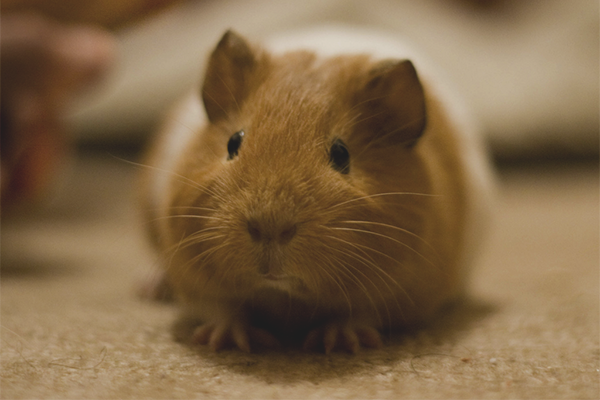
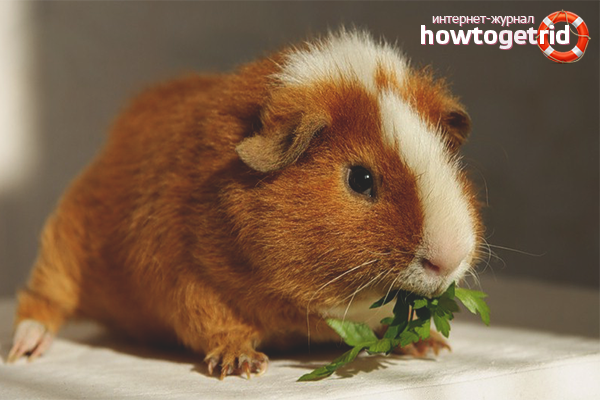
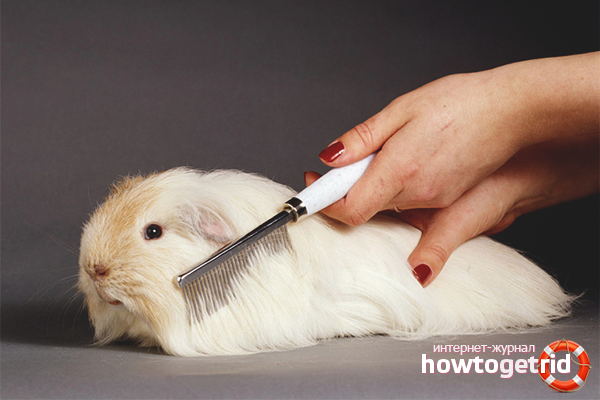
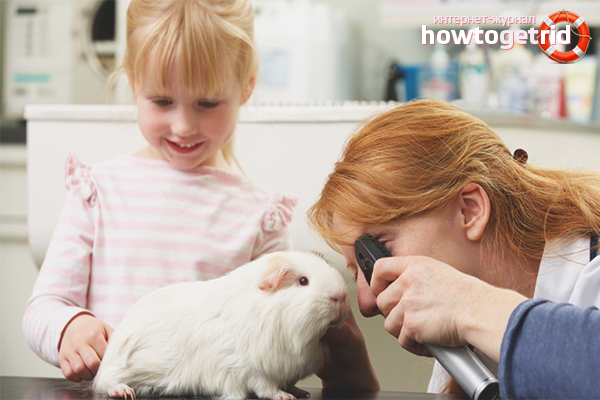

 10 votes, on average: 4,60 out of 5
10 votes, on average: 4,60 out of 5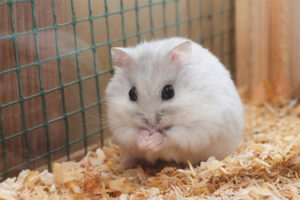


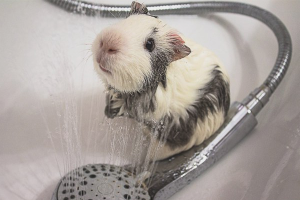

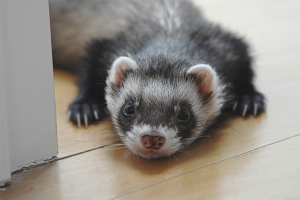
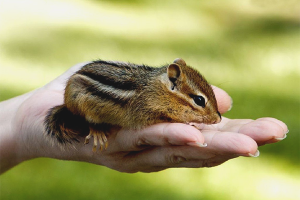
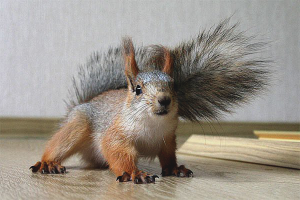
To send